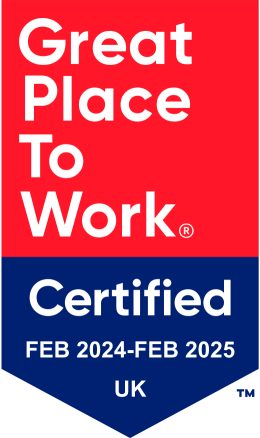07 January 2016 | Blog
Improving airline productivity and efficiency with UI design principles
07 January 2016 | Blog
Improving airline productivity and efficiency with UI design principles
Thomas Carlyle once said, “Man is a tool-using animal…Without tools he is nothing, with tools he is all.”
The software, websites and applications we use every day to enable us to do our jobs well and keep our businesses ticking along certainly play into this notion.
As we kick off the new year with big bold plans to achieve more – to be more productive, efficient and successful in business (and personal life!) - we take a look at how industry-leading user interfaces (‘UI’) can help travel companies do just that.
Principle 1: Understand the context
Imagine a team of staff, each responsible in part for the creation, editing, management or sending of passenger notifications. Their roles and responsibilities differ from one travel company to another, and consequently, their needs from the system will too.
From security settings and approvals to data sources, branding and notification development – the UI must be flexible enough to understand the context of each, and adapt accordingly.
At Arlanda, Stockholm’s international airport, air traffic controllers were using legacy systems that required a lot of manual work. This resulted in planes waiting in long taxi lines or not taking off as scheduled – wasting time and causing severe disruption to unhappy passengers.
By understanding the safety and efficiency context in which Arlanda ATC needed a better solution, Veryday was able to create a sleek, toned down user interface that displayed easily glance-able flight status updates. Because of the contextual design process, the tool has helped increase departure efficiency and decrease passenger disruption without disrupting flight schedule workflows.
Understanding the different contexts in which users will be using technology is the first vital fundamental of an intuitive user interface. By understanding the ‘why’ it’s possible to create the most efficient process that quickly resolves the challenges of its users.
Principle 2: Keep it simple
Increased productivity is all about intuitive design, simplifying processes and removing unnecessary steps to reduce the time spent completing tasks. The added bonus? Delighting the user and making productivity a more pleasurable experience.
Remember when you had to tap through every button tirelessly on your Nokia 3210 keypad to get to the right letter, make the right words, form a sentence… the widespread adoption of easy-to-use smartphones in 2007 eradicated that all-encompassing, painful process (thank you Apple!). Fast forward to today and simple, smart interfaces of apps like WhatsApp are 50% more popular than SMS messages – handling 30 billion messages every day.
When it comes to passenger communications in particular, time is of the essence - especially when passengers are experiencing disruption. When you’re in a crisis, you need to be able to retrieve data, set up a tailored notification, authorise and send it within a matter of minutes. A well-planned, but simple user interface will empower the user to tackle the work at hand, using clear direction and intentional actions.
When it comes to simplifying processes, it’s a case of ‘building the right thing’, Neil Chalk, 15below’s Product Manager says in his blog:
“…the right thing can be a bit vague but I’d try and use these two principles to find out what’s right for now:
- Focus on the user needs
- Use your experience in the marketplace to the maximum”
Principle 3: Delight your users
It’s no surprise that Economists have found that happiness makes people around 12% more productive. Happy staff = better experiences for passengers, especially when it comes to passenger facing roles.
Take your contact centre for example, hundreds of agents in constant communication with passengers. Merely using positive language in conversation has only a 7% impact on customers, whereas the tone of delivery (and attitude of staff) has up to 38% impact. If staff aren’t happy, this will reflect in the service they provide.
When these staff have access to a best-in-class user interface that is intuitive, fast to use and clearly tailored to their needs, it will reflect in their productivity, attitude and, ultimately, the passenger’s experience with the airline.
Combined with the first two fundamentals - context and simplicity - you have the essence of a winning UI. Our relationship with technology affects our emotions and, therefore, our quality of life. Creating something that is a joy to use - that enables tasks to be completed fast, is simple to navigate, and has a clean and well-thought-out design - is what separates a 'good' from an 'exceptional' user interface.

